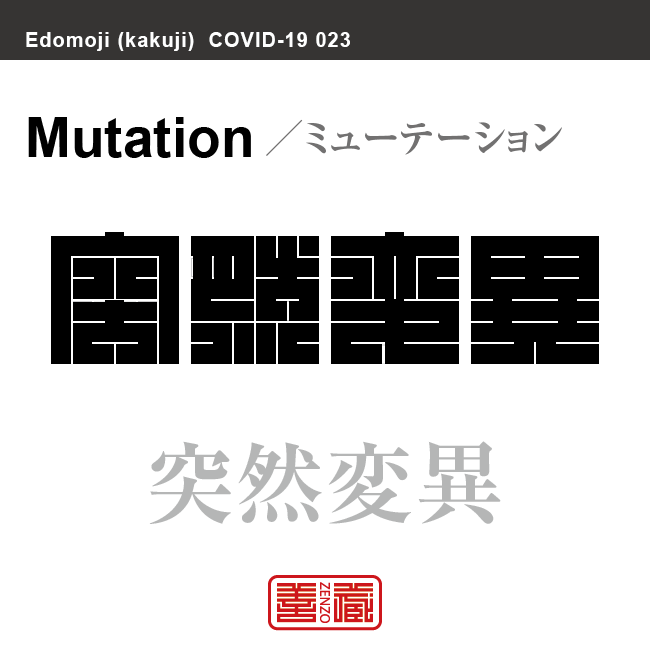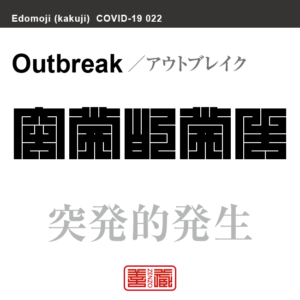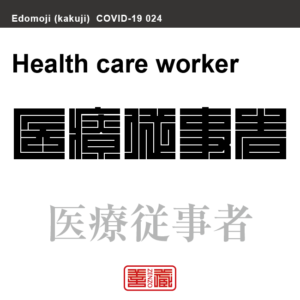突然変異 とつぜんへんい 角字で新型コロナウイルス感染症関連用語、漢字表記

突然変異
とつぜんへんい/ミューテーション
Mutation
Unicode: [突_0x7A81][然_0x7136][変_0x5909][異_0x7570]
生物やウイルスの遺伝物質の質的・量的変化が生じることで、複製元になかった新しい形質が現れること。
特に、DNAやRNA上の塩基配列に変化が生じることを遺伝子突然変異、染色体の数や構造に変化が生じることを染色体突然変異といいます。
自然突然変異の原因は、DNA複製の誤りや、放射線や活性酸素などでDNA損傷が生じるなどが考えられますが、まだ正確には解明されていません。
角字とは?
江戸時代に誕生した角字は、正方形のグリッド内にほぼ水平・垂直のラインのみで文字(漢字)が表現されるグラフィックアートです。
正方形という限られた空間の中に、あらゆる文字を閉じ込めようとするグラフィックデザインは、前述した、ミニマムな物に対する日本人特有のこだわりが随所に感じられます。
そのシンプルで有りながら、奥深い「角字」は多くの日本人を魅了し、お祭りで着る半被や印半纏(しるしばんてん)と言われる着物や、商標、印鑑、家紋、看板デザインなどに今日まで数多く使用されてきました。
What is Kakuji?
There is a style of penmanship called “Kakuji” in Japan. Edo-born Kakuji is a graphicart that expresses letters (kanji) with almost horizontal and vertical lines only.
The design which bases on many straight lines seems simple, or too plain even at its first glance; yet this beautiful artistic penmanship that encompasses the aesthetic of the Japanese in the Edo era, also known as “Iki”, and playfulness has long been inherited to this day, thanks to the masteries’ long years of efforts in training and refinement.
Kakuji with its simplicity and depth is used for designs such as trademark, hanko stamp, family crest and signboard.































































 2文字コード:MZ 3文字コード:MOZ 数字:508 ITU:258 ccTLD:.mz
2文字コード:MZ 3文字コード:MOZ 数字:508 ITU:258 ccTLD:.mz







































































































































